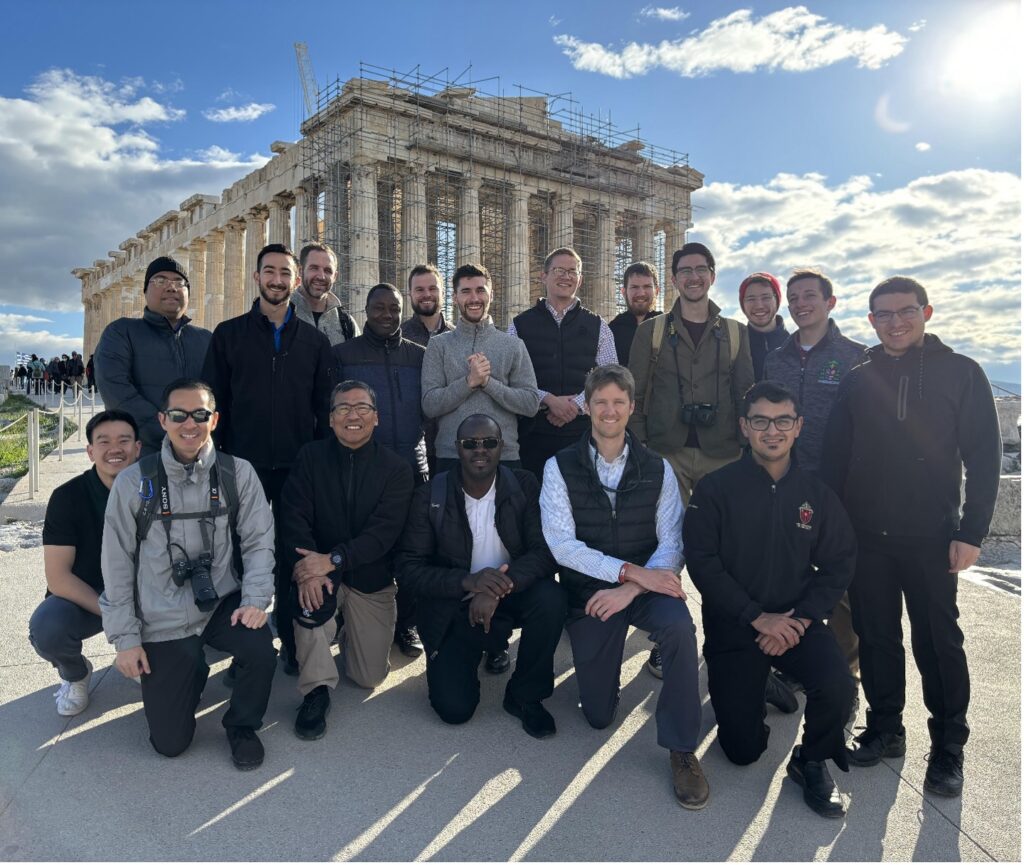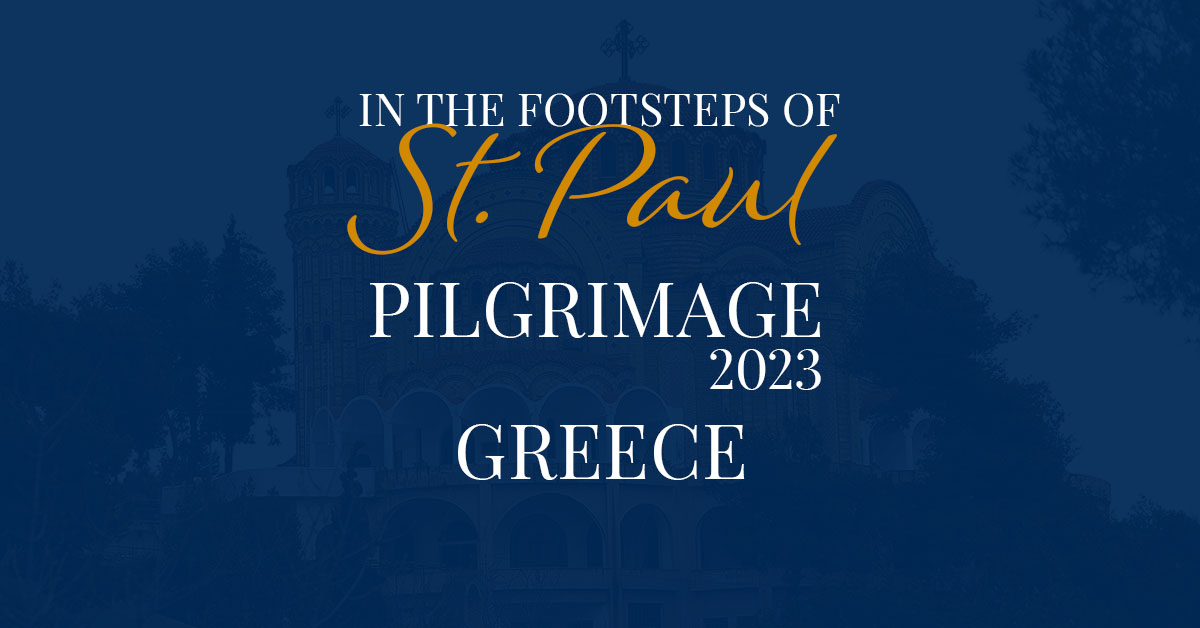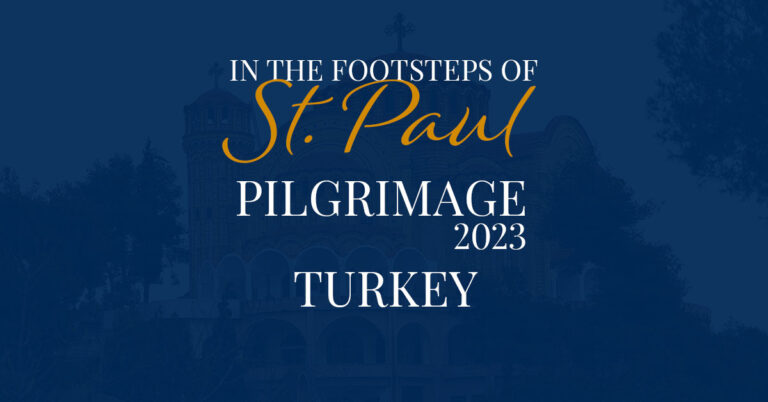The True Tower of Ivory
It’s our last full day in Greece, and the day when we celebrate the Solemnity of the Immaculate Conception. Today we toured the city of Athens, hiked up to the Parthenon (an ancient temple dedicated to the goddess Athena) and visited the Areopagus on the same rocky outcrop, where St. Paul preached to the Athenians (see Acts 17:16-34).

At the Parthenon, as we were looking upwards at the tall, ancient columns, Ben, one of our classmates, posited: “Why do all these people want to visit a bunch of old pillars?” That question gave me pause. “Yeah,” I wondered, “why would they want to do this?” Millions of people every year visit this place, yet for what purpose? To learn about history? Just to say they’ve done it? What are they seeking as they come to this place? From the perspective of a pilgrim, the reason for our travels is a reason that is ‘in this world but not of it’. Namely, we travel long distances to all these sites, such as the Areopagus where St. Paul preached, because of their spiritual, and therefore transcendental, significance to us as Christians. The external realities that we encounter can therefore shape us internally. But for those who are mere tourists, what takeaway will they have that can help orient them later in life?

When the moment is past, when the day is done, when their trip has come to an end, what experiences of theirs will help guide and give them a greater perspective in life –one that looks beyond one’s own self? Will all the photos they (and we ourselves) have taken ever be viewed again? Perhaps yes. But will viewing these photos and memories merely recall the events of the past, or will it help us make present the effects and experiences of being there, just as the celebration of the Eucharist makes present the sacrifice of Christ? This is part of what it means to be a pilgrim. Not to consume and take in various experiences and return to your life fundamentally unchanged, but to let the new moments of reflection, meditation, and strengthened connections to our Christian heritage help guide and form us in becoming a more perfect example and image of Christ.
Today we’ve looked upon pillars from of old, built to house the ivory and gold statue of an ancient Greek goddess who has no surviving devotion –mere remnants of a past with no present form. Yet today we celebrate and set our gaze towards the Tower of Ivory herself –Mary Immaculate –whose life and model of Christian discipleship will be remembered forever: “from this day all generations will call me blessed.”
O Mary, conceived without sin. Pray for us who have recourse to thee!
-Joseph Tapia-Beeman, Archdiocese of Seattle



